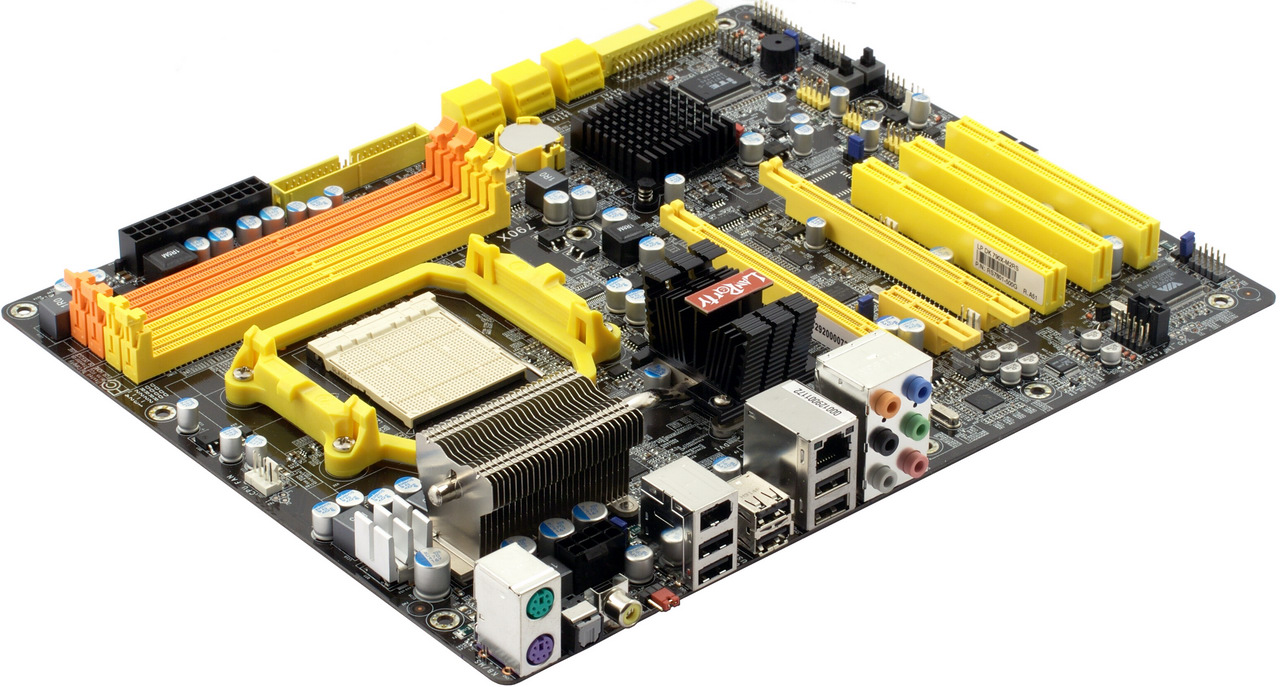DFI LANParty UT nF4 Ultra-D
DFI LANParty UT nF4 Ultra-D
DescriptionChipsDownloadsCPUs
Chipset
Nvidia nForce4 Ultra
CPU socket
Socket 939 (mPGA939)
CPU family
K8 — Athlon 64 FXK8 — Athlon 64K8 — Athlon 64 X2
FSB speed
1000MHz
Cache
None/Integrated in the CPU
RAM types
DDR UDIMMDDR UDIMM ECC
Max RAM size
4GB
PSU connector
12V P4 Connector (4-pin P4)ATX 2.x (24-pin ATX)
Form factor
ATX (max 305 x 244 mm)
Dimensions
305mm x 240mm
I/O ports
1x
Floppy interface
1x
Gameport
2x
IDE interface
1x
PS/2 keyboard
1x
PS/2 mouse
1x
Parallel
2x
Serial
8x
USB 2.0
4x
SATA I
2x
IEEE 1394
1x
RJ-45 LAN
1x
S/PDIF
Expansion slots
2x
32-bit PCI
2x
PCIe x16
1x
PCIe x4
1x
PCIe x1
Last updated 2023-06-15T23:59:53Z
TRW ID: 15849
Chipset
Nvidia nForce4 Ultra
Chipset parts
Nvidia CK8-04 (nF4)
Audio chips
Realtek ALC850 (AC97)
Network chips
Marvell 88E8001 (Yukon 1 32bit PCI Gigabit)
Super I/O chips
ITE IT8712F
FireWire ctrl. chips
VIA VT6307 (Fire IIM, PCI FireWire 400a)
Drivers:
not available
BIOS images:
1 file
Manuf.
POST String
Note
Core Ver.
BIOS Ver.
Award
04/06/2006-NF-CK804-6A61FD49C-00
6.00PG
NF4LD406
Documentation:
not available
Other files:
not available
Model
Speed
FSB
Voltages
L1 Cache
L2 Cache
L3 Cache
Core
Process
TDP
AMD Athlon 64 FX-57
2800MHz
1000MHz
1.35V
128KB
1MB
—
San Diego
90nm
104W
AMD Athlon 64 FX-60
2600MHz
1000MHz
1.35V
256KB
2MB
—
Toledo
90nm
110W
AMD Athlon 64 FX-55
2600MHz
1000MHz
1.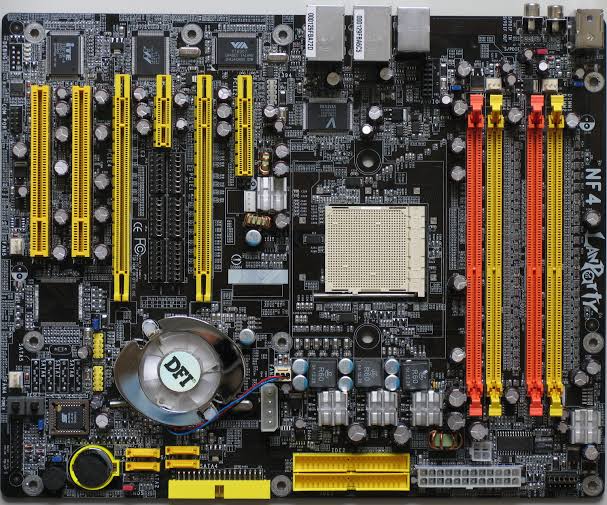 35V
35V
128KB
1MB
—
San Diego
90nm
104W
AMD Athlon 64 4000+
2400MHz
1000MHz
1.35V
128KB
1MB
—
Toledo
90nm
89W
AMD Athlon 64 3800+
2400MHz
1000MHz
1.35V
128KB
512KB
—
Venice
90nm
89W
AMD Athlon 64 4000+
2400MHz
1000MHz
1.35V
128KB
1MB
—
San Diego
90nm
89W
AMD Athlon 64 3500+
2200MHz
1000MHz
1.35V
128KB
512KB
—
Manchester
90nm
67W
AMD Athlon 64 3500+
2200MHz
1000MHz
1.35V
128KB
512KB
—
San Diego
90nm
67W
AMD Athlon 64 3700+
2200MHz
1000MHz
1.35V
128KB
1MB
—
Toledo
90nm
89W
AMD Athlon 64 3500+
2200MHz
1000MHz
1.35V
128KB
512KB
—
Venice
90nm
67W
AMD Athlon 64 3700+
2200MHz
1000MHz
1.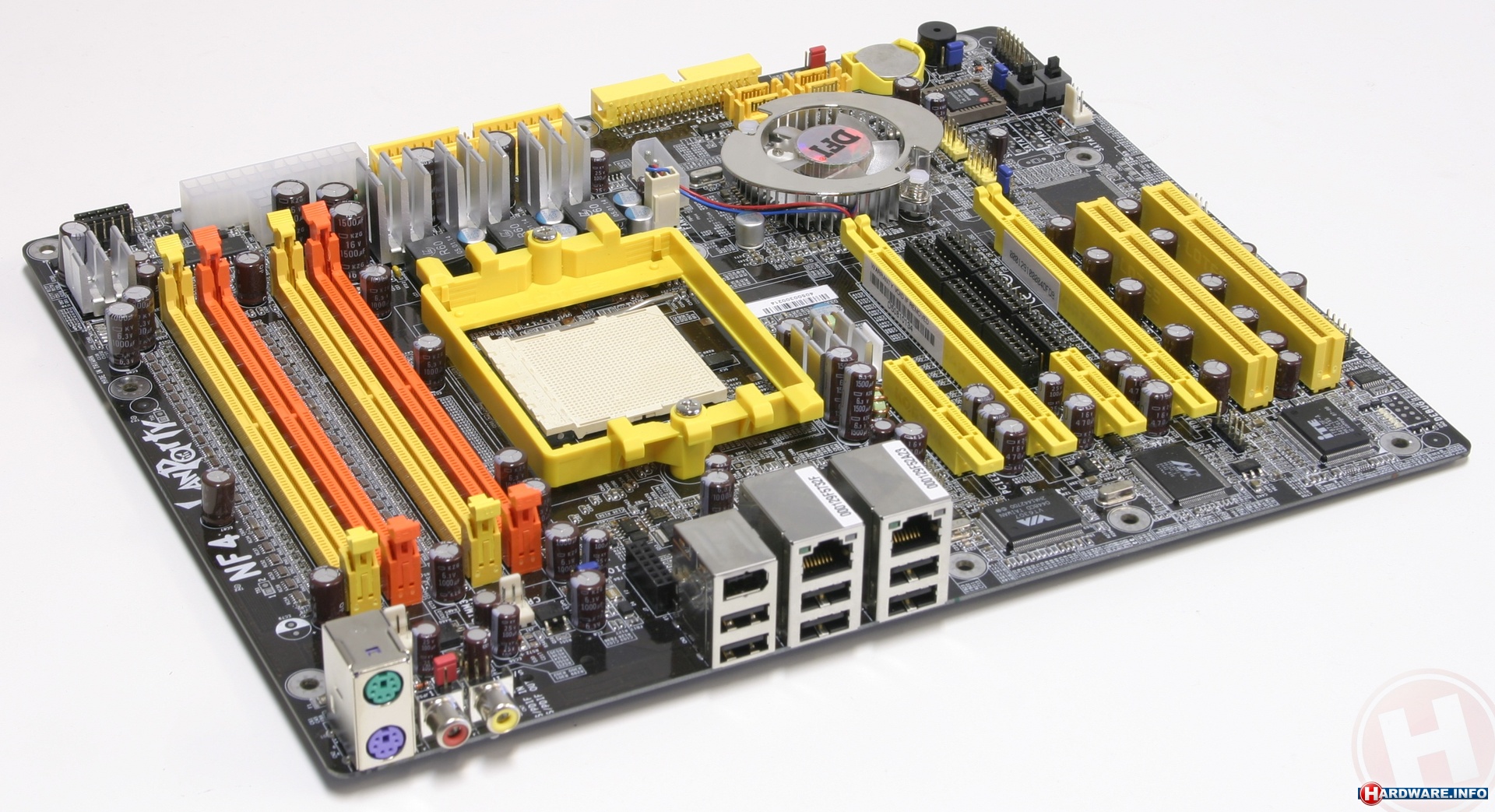 35V
35V
128KB
1MB
—
San Diego
90nm
89W
AMD Athlon 64 3500+
2200MHz
1000MHz
1.4V
128KB
512KB
—
Winchester
90nm
67W
AMD Athlon 64 3200+
2000MHz
1000MHz
1.4V
128KB
512KB
—
Winchester
90nm
67W
AMD Athlon 64 3200+
2000MHz
1000MHz
1.35V
128KB
512KB
—
Venice
90nm
67W
AMD Athlon 64 3200+
2000MHz
1000MHz
1.35V
128KB
512KB
—
Manchester
90nm
67W
AMD Athlon 64 3000+
1800MHz
1000MHz
1.35V
128KB
512KB
—
Venice
90nm
67W
AMD Athlon 64 3000+
1800MHz
1000MHz
1.4V
128KB
512KB
—
Winchester
90nm
67W
AMD Athlon 64 FX-55
2600MHz
1000MHz
1.5V
128KB
1MB
—
ClawHammer
130nm
104W
AMD Athlon 64 FX-53
2400MHz
1000MHz
1.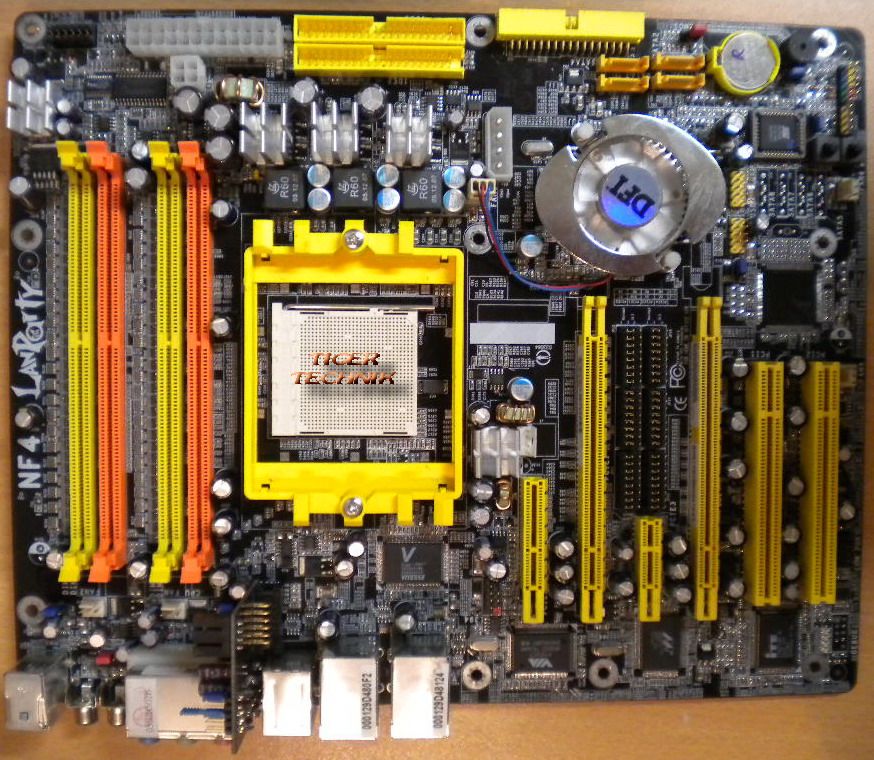 5V
5V
128KB
1MB
—
ClawHammer
130nm
89W
AMD Athlon 64 3800+
2400MHz
1000MHz
1.5V
128KB
512KB
—
Newcastle
130nm
89W
AMD Athlon 64 4000+
2400MHz
1000MHz
1.5V
128KB
1MB
—
ClawHammer
130nm
89W
AMD Athlon 64 3800+
2400MHz
1000MHz
1.5V
128KB
512KB
—
ClawHammer
130nm
89W
AMD Athlon 64 3500+
2200MHz
1000MHz
1.5V
128KB
512KB
—
ClawHammer
130nm
89W
AMD Athlon 64 3500+
2200MHz
1000MHz
1.5V
128KB
512KB
—
Newcastle
130nm
89W
AMD Athlon 64 3200+
2000MHz
1000MHz
1.5V
128KB
512KB
—
Newcastle
130nm
89W
AMD Athlon 64 3000+
1800MHz
1000MHz
1.5V
128KB
512KB
—
Newcastle
130nm
89W
No NPUs listed.
Image 1 of 1
Disclaimer
The info found in this page might not be entirely correct. Check out this guide to learn how you can improve it.
DFI Lanparty UT nF4 SLI-D mobo • The Register
Review DFI’s popularity has risen steadily ever since it launched its Lanparty range of motherboards a couple of years ago. Since then the Lanparty family has grown with the introduction of a ‘lite’ version in the shape of the Lanparty UT, writes Lars-Goran Nilsson.
DFI hasn’t stripped out all of the features of the Lanparty boards to create the UT range. The only thing you really lose are the extra accessories such as the Front-X and the case carrying straps.
The first board we’ve looked at in this new series of products from DFI is the Lanparty UT nF4 SLI-D, which is a rather unusual SLi motherboard in several ways. The most obvious difference between the Lanparty UT nF4 SLI-D and the other SLi boards is the layout: the CPU socket has been placed below the memory modules. There could potentially be problems with this layout with certain cases such as the SilverStone TJ06 and Enermax CS-718-S, which have a special cooling setup. This is only an issue with a few cases on the market, but it’s worth highlighting.
There could potentially be problems with this layout with certain cases such as the SilverStone TJ06 and Enermax CS-718-S, which have a special cooling setup. This is only an issue with a few cases on the market, but it’s worth highlighting.
From this it’s clear that DFI didn’t follow the Nvidia reference design and further proof of this is that the little piece of PCB that most SLi boards use to change between SLi and non-SLi mode is missing. Instead, DFI uses six blocks of jumpers that have to be moved to change to SLi mode. The problem with this is that the jumper blocks are quite hard to remove, even with the included tool. As the tool hasn’t been specifically designed for removing jumpers — it’s a BIOS chip removal tool — it takes time and patience to remove the jumper blocks. However, re-fitting them is easy enough and it’s not a task that you’ll perform more than once or twice in the lifetime of the board anyhow.
The third and final major difference between the Lanparty UT nF4 SLI-D any most other motherboards we’ve looked is the Karajan audio module. Rather than having the audio codec on the motherboard, DFI has moved it to a small plug-in module, attached to the motherboard via a set of pins. This is meant to reduce EM interference. However, I have to admit that my untrained ears didn’t pick up any more noise on other SLI boards than it did with the DFI Karajan module. The Realtek ALC850 AC97 audio codec might hold back the full potential of DFI’s audio setup as it isn’t the best audio codec on the market partly because it’s not HD compliant.
Rather than having the audio codec on the motherboard, DFI has moved it to a small plug-in module, attached to the motherboard via a set of pins. This is meant to reduce EM interference. However, I have to admit that my untrained ears didn’t pick up any more noise on other SLI boards than it did with the DFI Karajan module. The Realtek ALC850 AC97 audio codec might hold back the full potential of DFI’s audio setup as it isn’t the best audio codec on the market partly because it’s not HD compliant.
This is also one of few boards available so far with an x4 PCI Express slot, which is physically longer than a x1 slot. How significant that is at the moment is hard to tell, but I have heard whispers about PCI Express soundcards needing a x4 slot to work properly so there might have been some wisdom here on DFIs side.
The x4 slot though only works in x4 mode when SLi is enabled. The nForce 4 SLi chipset has a total of 20 data lanes at its disposal. In non-SLi mode on the Lanparty UT nF4 SLI-D this is split up into one x1 slot, one x2 slot and one x16, meaning that the x4 slot only operates in x1 mode, as there’s only one lane of bandwidth left available to it. In SLi mode, however, the x2 and x16 each become x8 slots — leaving four lanes of bandwidth, which are then assigned to the x4 slot. The x1 slot is then disabled.
In non-SLi mode on the Lanparty UT nF4 SLI-D this is split up into one x1 slot, one x2 slot and one x16, meaning that the x4 slot only operates in x1 mode, as there’s only one lane of bandwidth left available to it. In SLi mode, however, the x2 and x16 each become x8 slots — leaving four lanes of bandwidth, which are then assigned to the x4 slot. The x1 slot is then disabled.
Get our Tech Resources
Dfi lanparty ut nf4 ultra-d 939 drivers – Telegraph
Dfi lanparty ut nf4 ultra-d 939 drivers====== Dfi lanparty ut nf4 ultra-d 939 drivers ++++++ 900 download link 07
====== Download link Dfi lanparty ut nf4 ultra-d 939 drivers ++++++
Dfi lanparty ut nf4 ultra-d 939 drivers
Yes, I don’t like everything at all!!! While most manufacturers do realize that overclocking is not merely just a fringe hobbyist activity, and do include some tweaking options, there are few that go all out and really let loose the options in the BIOS to allow the end user to really break something. Yes, I don’t like it at all! Version Update Operating system Description 5. Network driver Drivers for network configuration on DFI LANPARTY UT nF4 Ultra-D. Product names and trademarks are the property of their respective owners. After setting their mark with theiras the enthusiast board to get for the Socket A platform, DFI has further extended their LanParty lineup to both the Socket 754 and Socket-T line ups all of which have been well received. Version Update Operating system Description 21.
Yes, I don’t like it at all! Version Update Operating system Description 5. Network driver Drivers for network configuration on DFI LANPARTY UT nF4 Ultra-D. Product names and trademarks are the property of their respective owners. After setting their mark with theiras the enthusiast board to get for the Socket A platform, DFI has further extended their LanParty lineup to both the Socket 754 and Socket-T line ups all of which have been well received. Version Update Operating system Description 21.
While most manufacturers do realize that overclocking is not merely just a fringe hobbyist activity, and do include some tweaking options, there are few that go all out and really let loose the options in the BIOS to allow the end user to really break something. Most likely your operating system is Windows XP. Russia — done with difficulty. DFI LANPARTY UT nF4 Ultra-D motherboard drivers: Name: DFI LANPARTY UT nF4 Ultra-D WinXP 64-bit Version: 2.
All trademarks used are properties of their respective owners.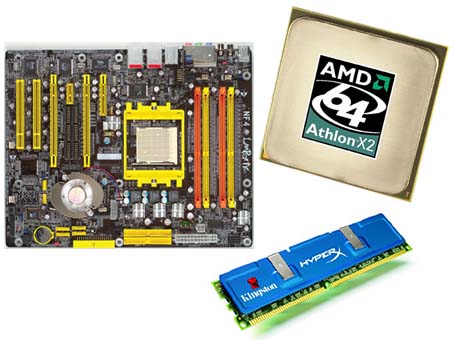 Are you looking for a driver for DFI LANPARTY UT nF4 Ultra-D motherboard? For NForce4 Chipset Didn’t find the right type of driver for your DFI LANPARTY UT nF4 Ultra-D motherboard? While most manufacturers do realize that overclocking is not merely just a fringe hobbyist activity, and do include some tweaking options, there are few that go all out and really let loose the options in the BIOS to allow the end user to really break something. Yes, I don’t like it at all! Introduction The transition between AGP and PCIe has also brought out a crop of new chipsets from everybody including which brings arguably the richest feature set out of the current generation of K8 boards. When using the site materials reference to the source is required. Driver for motherboard DFI LANPARTY UT nF4 Ultra-D On this page you are offered with driver for motherboard LANPARTY UT nF4 Ultra-D existing in our database DFI.
Are you looking for a driver for DFI LANPARTY UT nF4 Ultra-D motherboard? For NForce4 Chipset Didn’t find the right type of driver for your DFI LANPARTY UT nF4 Ultra-D motherboard? While most manufacturers do realize that overclocking is not merely just a fringe hobbyist activity, and do include some tweaking options, there are few that go all out and really let loose the options in the BIOS to allow the end user to really break something. Yes, I don’t like it at all! Introduction The transition between AGP and PCIe has also brought out a crop of new chipsets from everybody including which brings arguably the richest feature set out of the current generation of K8 boards. When using the site materials reference to the source is required. Driver for motherboard DFI LANPARTY UT nF4 Ultra-D On this page you are offered with driver for motherboard LANPARTY UT nF4 Ultra-D existing in our database DFI.
Dfi lanparty ut nF4 ultra-d 939 drivers
Icons placed to the left of the file name will prompt you in which format and in what language drivers download DFI LANPARTY UT nF4 Ultra-D Motherboard are represented in this file.